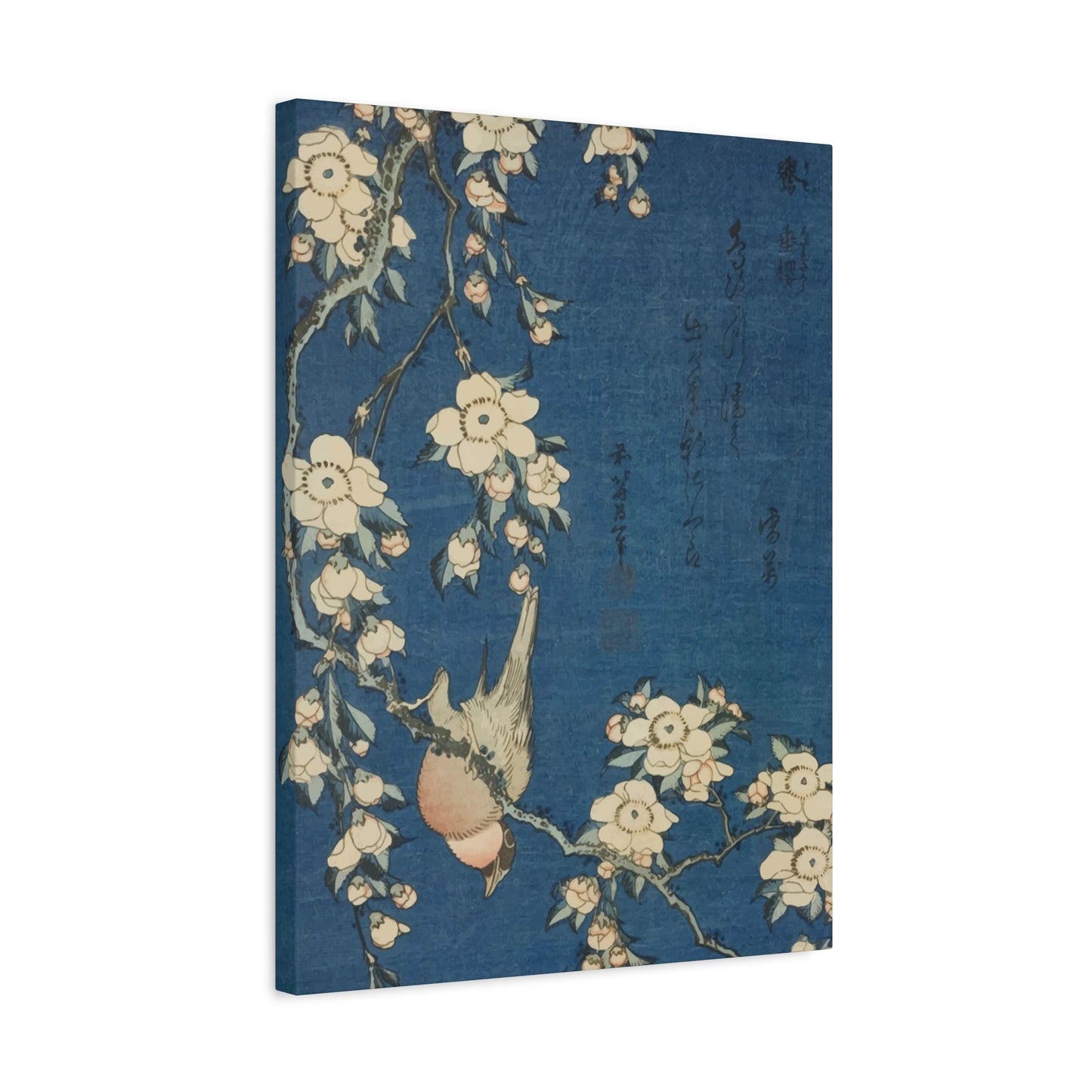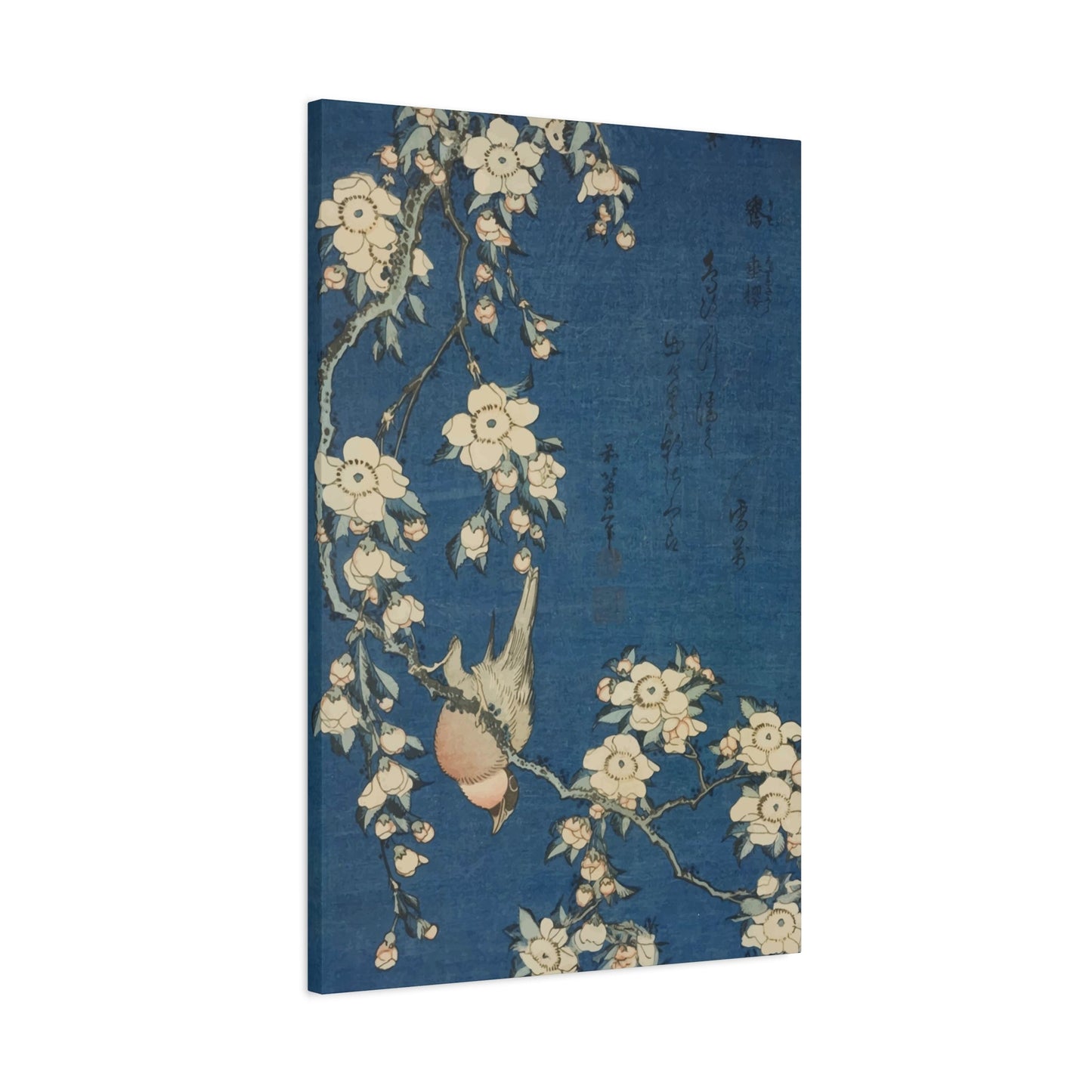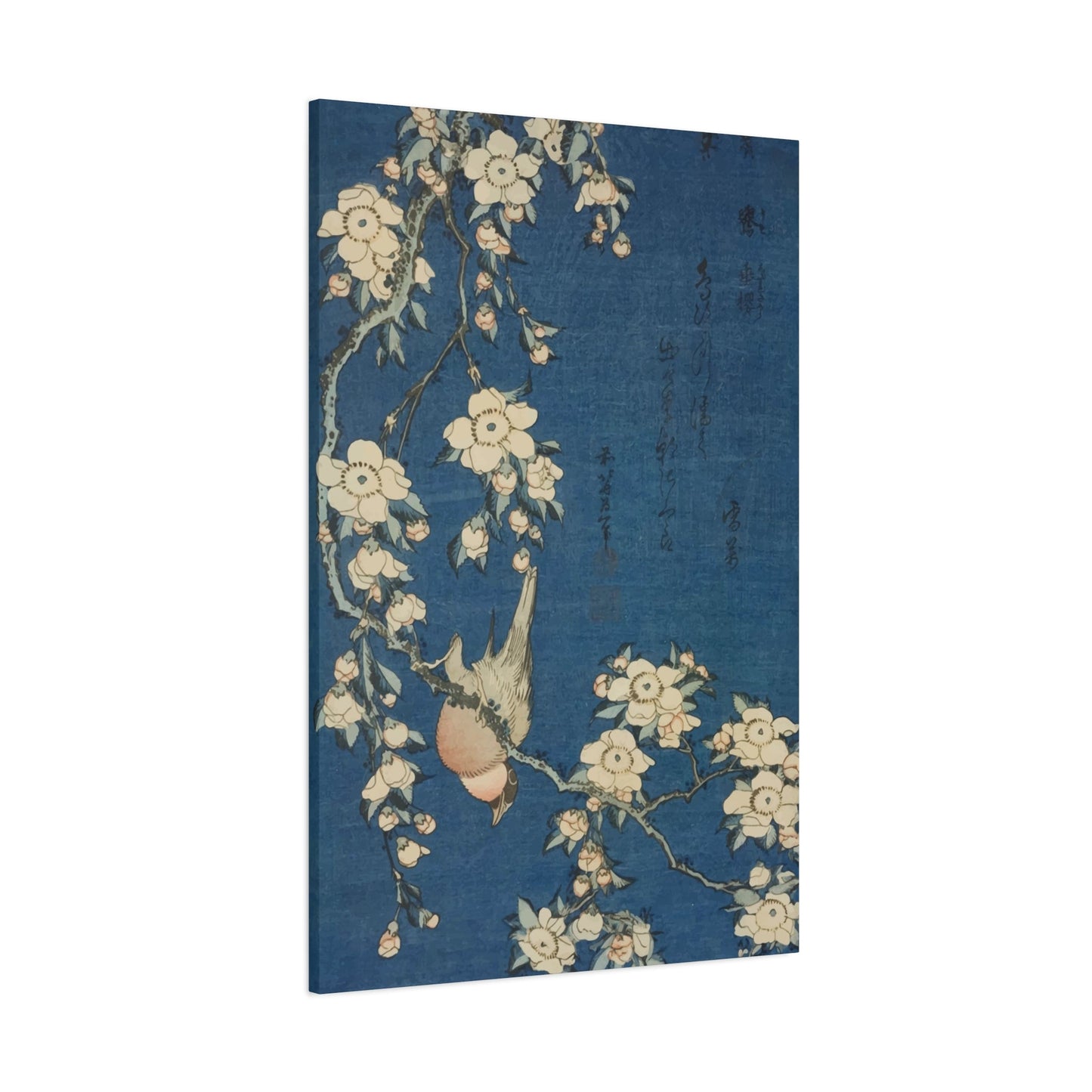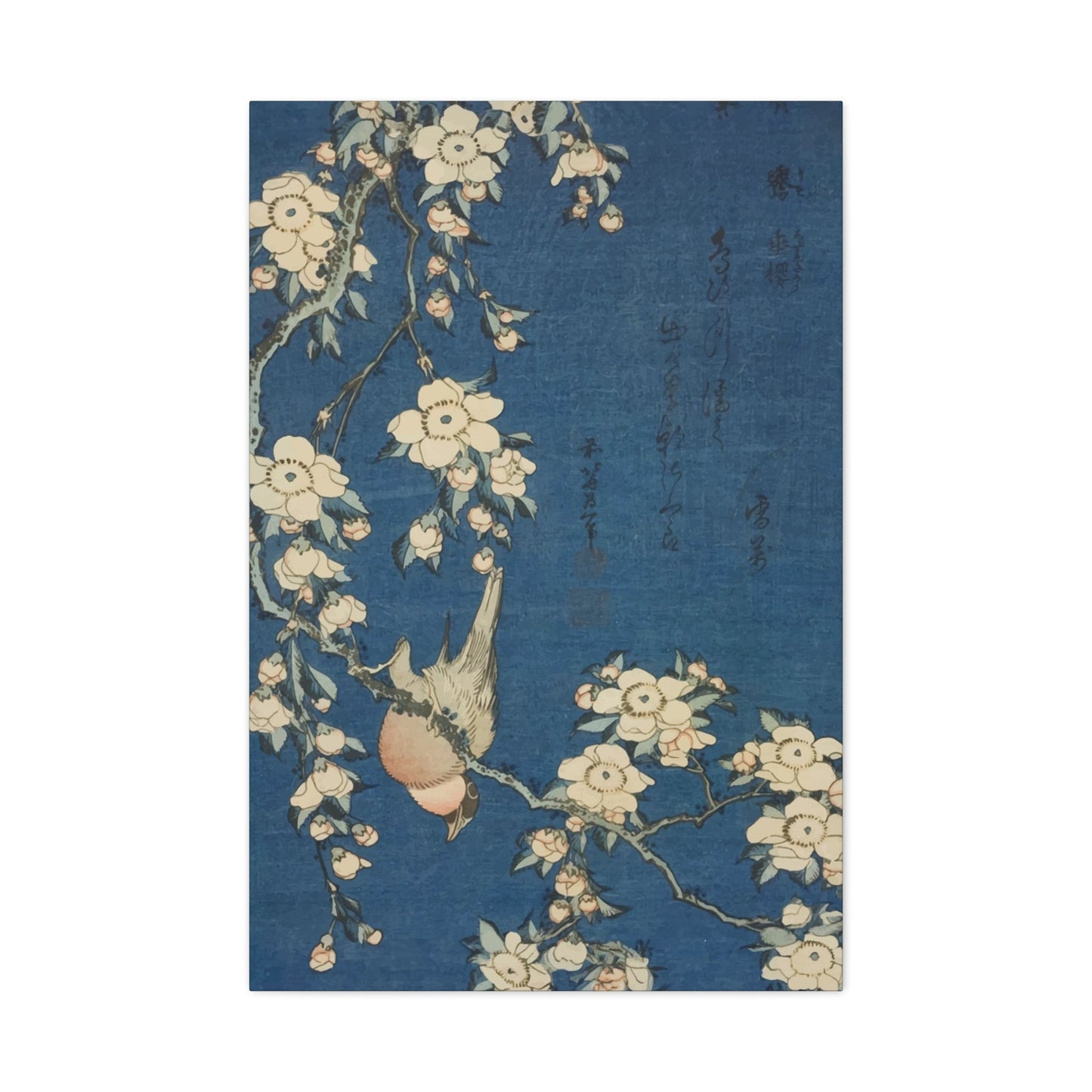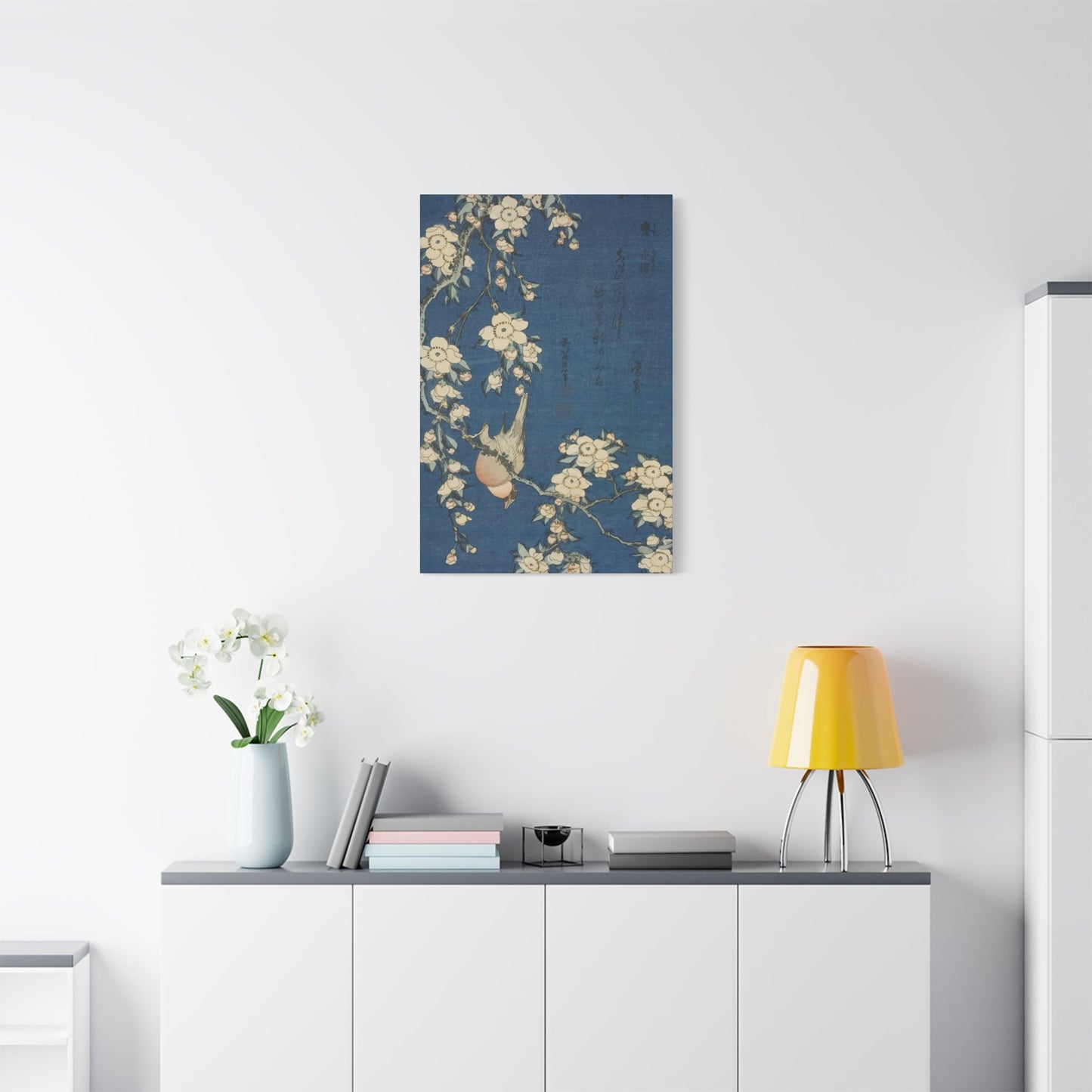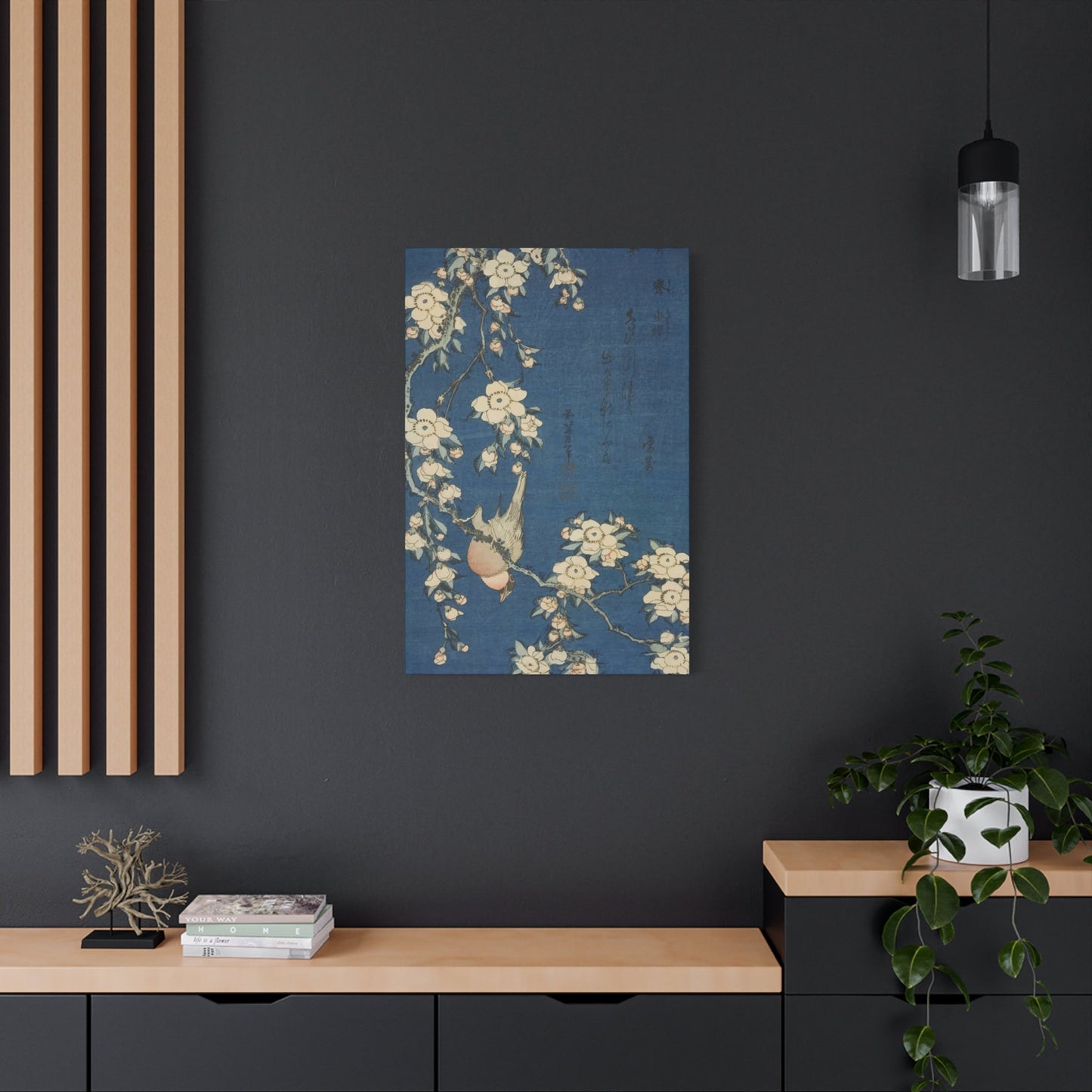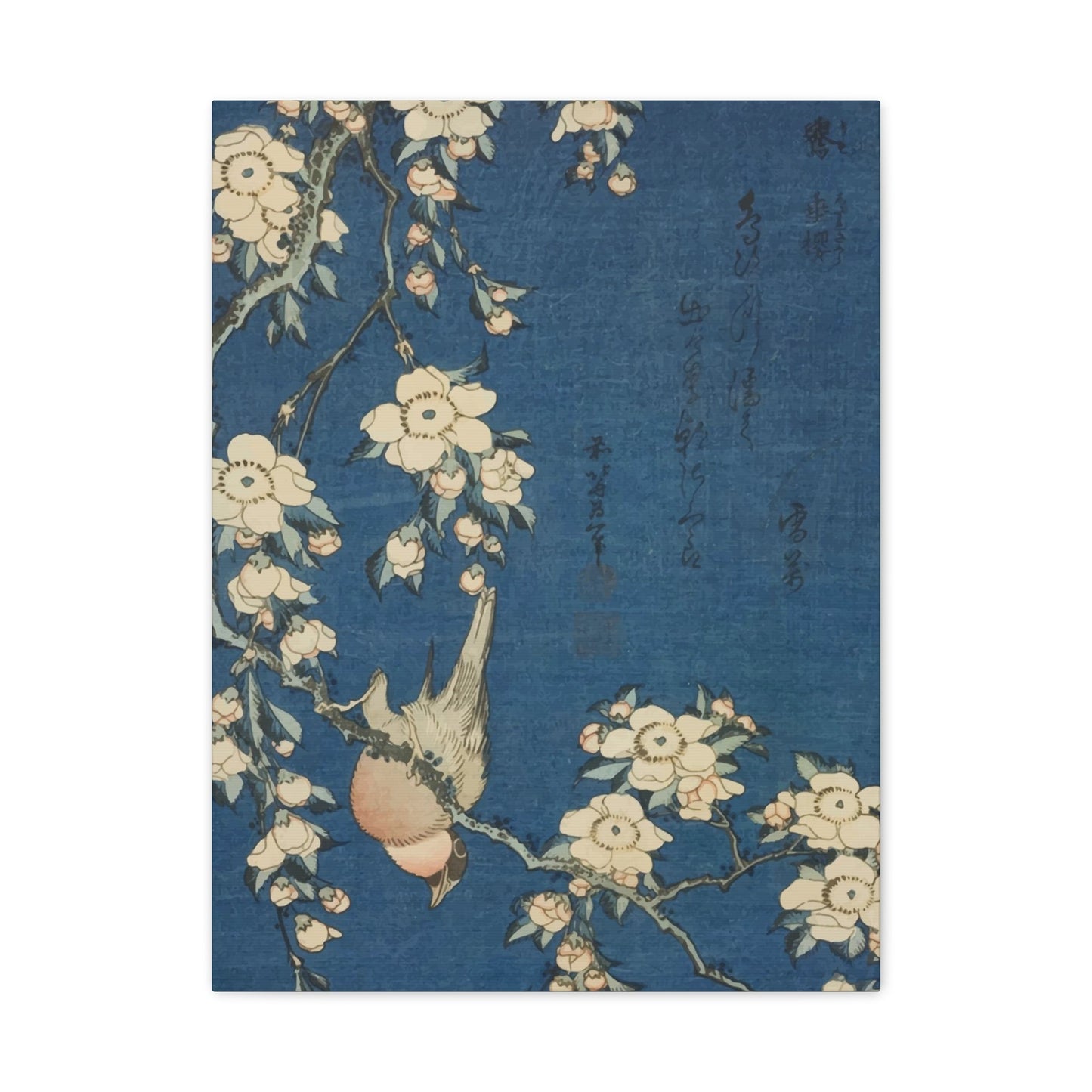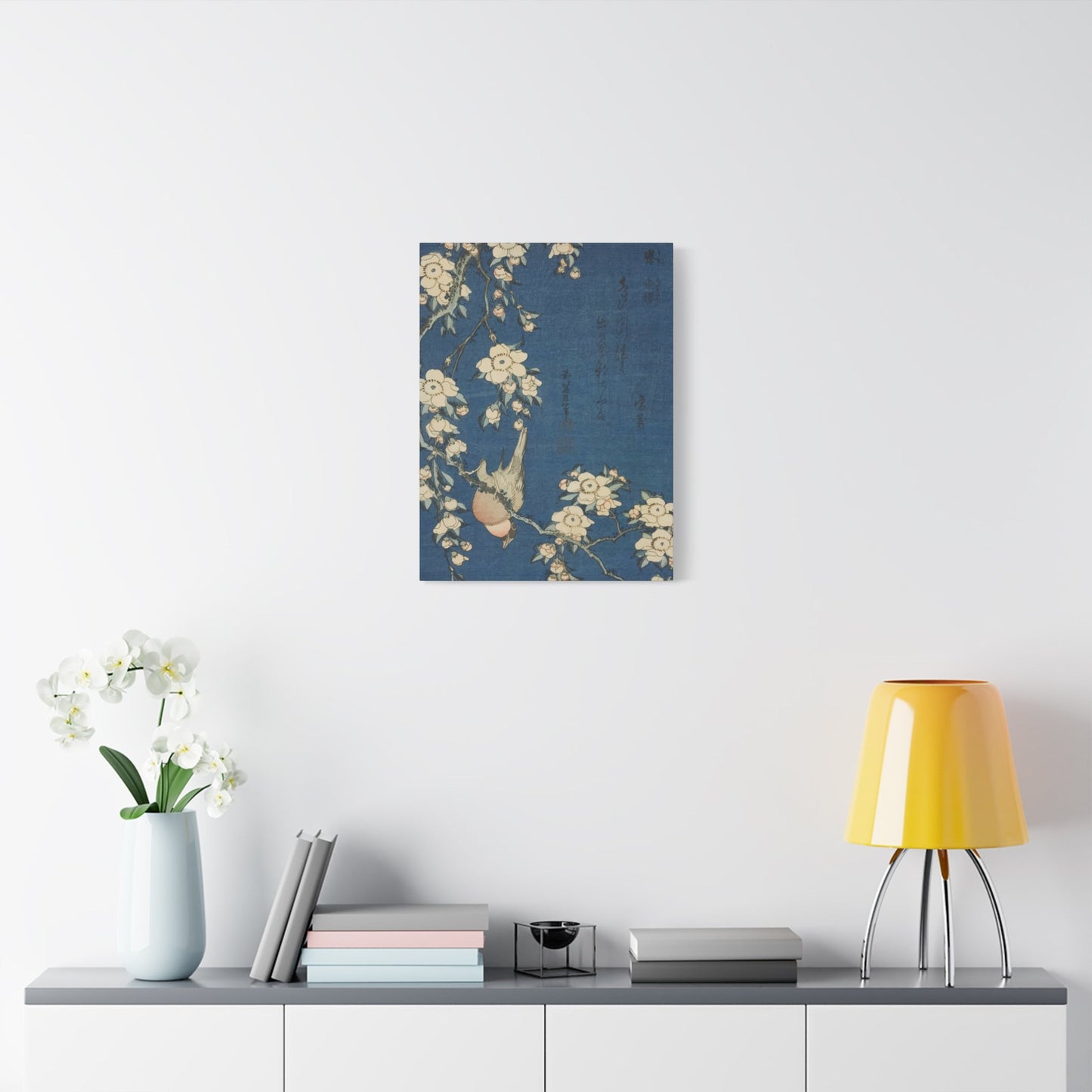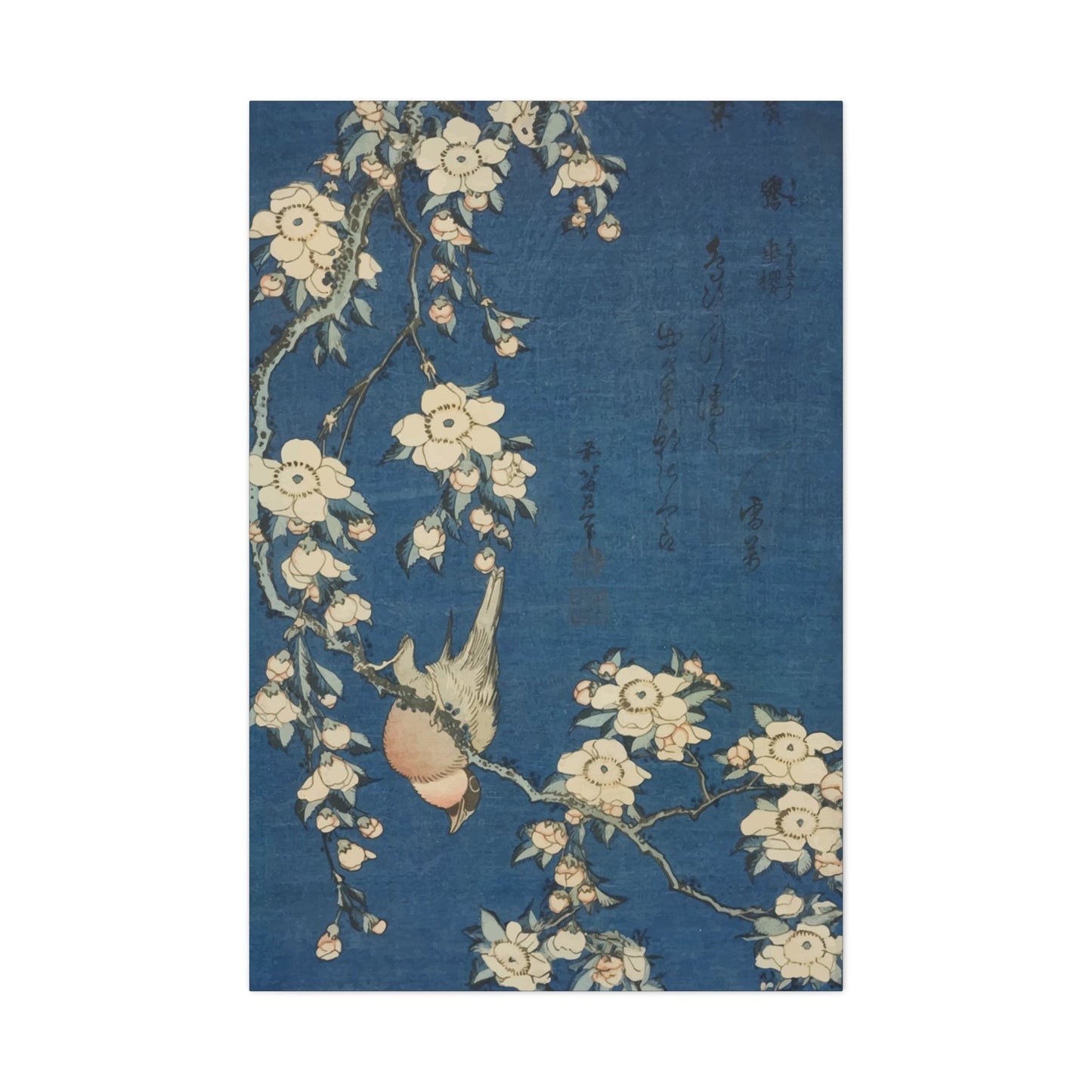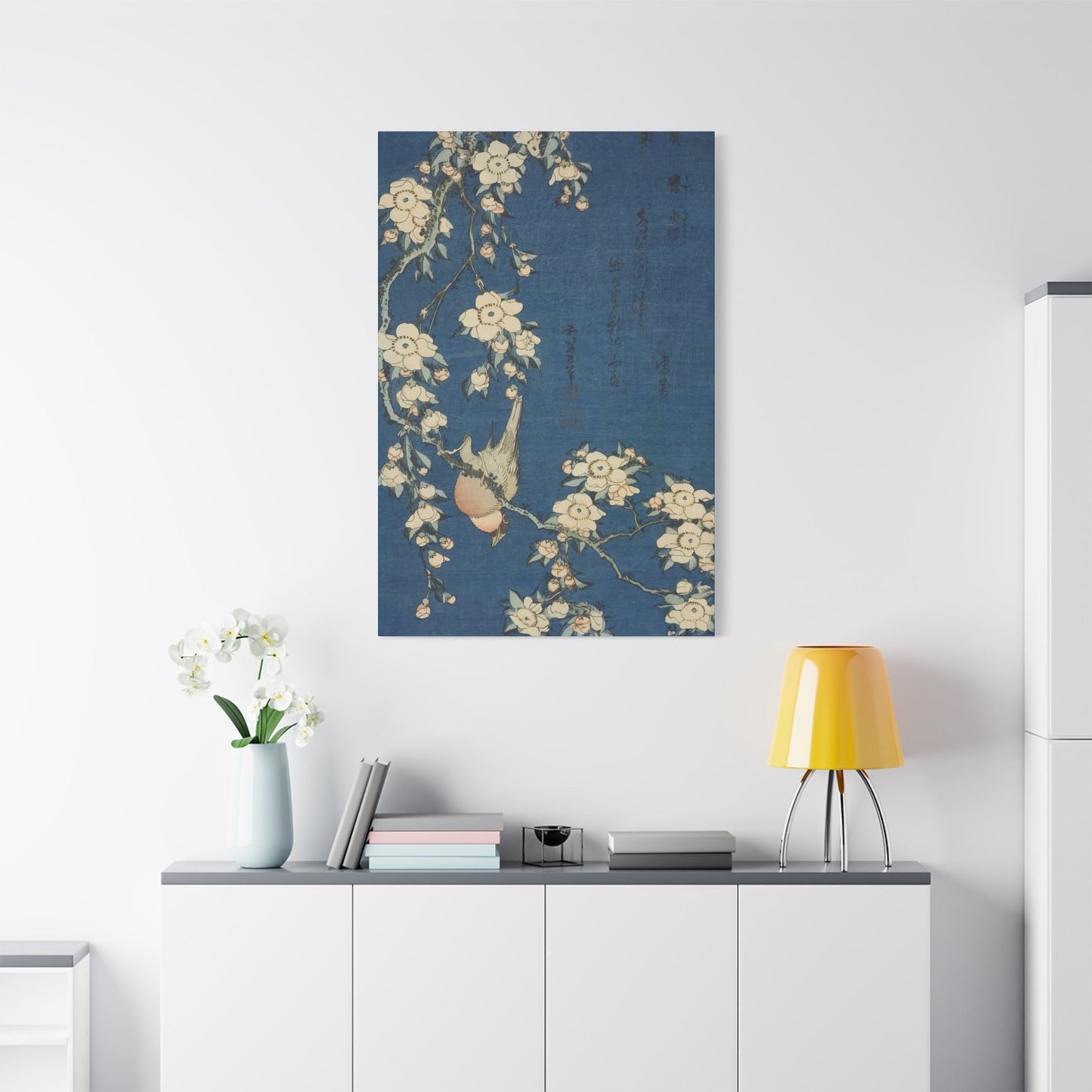Hokusai Wall Art: Bringing Timeless Japanese Elegance into Your Home
The artistic legacy of Katsushika Hokusai continues to captivate art enthusiasts and homeowners alike, offering a perfect blend of traditional Japanese aesthetics and contemporary appeal. Hokusai wall art represents more than mere decoration; it embodies centuries of cultural heritage while seamlessly integrating into modern living environments. This comprehensive exploration delves into the multifaceted world of Hokusai's artistic contributions, examining how these masterpieces can enhance your home's aesthetic appeal while honoring the rich traditions of Japanese artistry.
The Enchanting Allure of Hokusai Wall Art
Hokusai wall art possesses an extraordinary ability to transform ordinary rooms into captivating environments that speak to both the heart and mind. The masterful brushwork and distinctive compositional elements create visual narratives that transcend temporal boundaries, making these pieces as relevant today as they were during the Edo period. Each print carries within it the essence of Japanese philosophical thought, where nature and humanity exist in harmonious balance.
The magnetic appeal of Hokusai's work lies in its universal accessibility. Whether you're drawn to the dynamic energy of crashing waves or the serene majesty of Mount Fuji, these artworks communicate emotions and concepts that resonate across cultural divides. The artist's ability to capture fleeting moments in nature while imbuing them with profound meaning creates pieces that invite contemplation and appreciation.
Contemporary homeowners increasingly seek artwork that offers both aesthetic beauty and cultural depth. Hokusai wall art fulfills this desire by providing pieces that serve as conversation starters while contributing to a home's overall ambiance. The interplay of bold blues, gentle earth tones, and dramatic compositional elements creates visual interest that enhances rather than overwhelms existing decor.
The psychological impact of viewing Hokusai's work cannot be understated. Research suggests that exposure to nature-inspired artwork can reduce stress levels and promote feelings of tranquility. The rhythmic patterns found in wave motifs and the stable presence of mountain landscapes create a sense of balance that can positively influence one's daily experience within their living environment.
Furthermore, the investment value of quality Hokusai reproductions continues to grow as appreciation for Japanese culture expands globally. These pieces represent not only aesthetic choices but also informed investments in art that maintains its relevance across generations.
Why The Great Wave Deserves a Place in Your Home
The Great Wave off Kanagawa stands as perhaps the most recognizable image in all of Japanese art, and its presence in your home creates an immediate focal point that commands attention while inspiring reflection. This masterpiece exemplifies the perfect marriage of technical skill and emotional resonance, making it an ideal choice for those seeking artwork with both visual impact and cultural significance.
The compositional genius of The Great Wave lies in its dynamic tension between opposing forces. The threatening foam-capped wave dominates the foreground while Mount Fuji sits serenely in the distance, creating a visual dialogue between chaos and tranquility. This juxtaposition speaks to the human experience of navigating life's challenges while maintaining hope for stability and peace.
When positioned strategically within a home, The Great Wave becomes more than decoration; it transforms into a daily reminder of resilience and the beauty that can be found within life's turbulent moments. The sweeping curves and dramatic movement captured in the print create a sense of energy that can invigorate a room while the underlying themes of perseverance provide emotional grounding.
The color palette of The Great Wave, dominated by various shades of blue contrasted with white foam and subtle earth tones, offers remarkable versatility in terms of coordination with existing home decor. These colors complement both neutral and bold color schemes, allowing the artwork to integrate seamlessly into diverse aesthetic approaches.
The symbolic significance of water in Japanese culture adds another layer of meaning to displaying The Great Wave in your home. Water represents purification, renewal, and the flow of life itself. Having this representation prominently displayed can serve as a daily reminder of these positive concepts while contributing to a sense of harmony within your living environment.
Modern printing techniques allow for stunning reproductions that capture the subtle gradations and intricate details of the original woodblock print. High-quality canvas reproductions maintain the texture and depth that make Hokusai's work so compelling while offering durability suitable for long-term display.
Hokusai Prints: Infusing Japanese Culture into Contemporary Homes
Incorporating Hokusai prints into modern homes creates a bridge between Eastern philosophical traditions and Western aesthetic sensibilities. These artworks offer homeowners an opportunity to embrace the Japanese concept of wabi-sabi, finding beauty in imperfection and impermanence while celebrating the natural world's inherent harmony.
The ukiyo-e tradition from which Hokusai's work emerges translates to "pictures of the floating world," a concept that emphasizes the transient nature of earthly pleasures and experiences. This philosophical foundation makes Hokusai prints particularly suitable for contemporary living, where the pace of modern life often obscures our connection to nature's rhythms and seasonal changes.
Japanese prints excel at creating atmosphere through subtle details and carefully considered negative areas. Unlike Western artistic traditions that often emphasize filling every portion of the canvas, Hokusai's approach utilizes empty areas to create breathing room and contemplative pauses within the composition. This technique translates beautifully to modern homes, where clean lines and uncluttered aesthetics are highly valued.
The integration of Hokusai prints into contemporary settings demonstrates the timeless nature of quality artistic expression. Whether displayed in minimalist environments or eclectic collections, these pieces maintain their integrity while enhancing the overall aesthetic appeal of their surroundings. The key lies in understanding how the prints' inherent qualities complement rather than compete with existing decorative elements.
Color coordination plays a crucial role in successfully incorporating Hokusai prints into modern homes. The artist's mastery of blue pigments, ranging from deep indigo to pale sky tones, provides a foundation for building cohesive color schemes. These blues can be echoed in textiles, accessories, or architectural elements to create unified design approaches that honor both the artwork and the home's overall aesthetic.
The educational value of displaying authentic Japanese art reproductions extends beyond mere decoration. These pieces serve as windows into a rich cultural tradition, offering opportunities for family members and guests to learn about Japanese history, philosophy, and artistic techniques. This educational component adds depth to the decorative function, making the investment in Hokusai prints both aesthetically and intellectually rewarding.
Elevating Your Home with Hokusai's Iconic Artwork
The transformative power of Hokusai's iconic artwork extends far beyond simple decoration, offering homeowners an opportunity to create environments that inspire contemplation, creativity, and cultural appreciation. Each piece serves as a portal to Japan's rich artistic heritage while contributing to the contemporary home's aesthetic and emotional landscape.
Hokusai's mastery of line and form creates visual experiences that evolve with prolonged viewing. Initial impressions often focus on the dramatic elements – the crashing waves, towering mountains, or graceful birds in flight. However, extended observation reveals subtle details and nuanced relationships between compositional elements that reward patience and attention.
The placement of Hokusai artwork within a home requires thoughtful consideration of viewing angles, lighting conditions, and spatial relationships. These prints possess a remarkable ability to anchor a room's design while providing flexibility for seasonal or periodic rearrangement. The themes of nature and seasonal change inherent in many of Hokusai's works make them particularly suitable for creating dynamic displays that can evolve throughout the year.
Lighting plays a crucial role in maximizing the impact of Hokusai wall art. Natural light reveals the subtle color variations and textural qualities that make these reproductions so compelling, while strategically placed artificial lighting can create dramatic effects that emphasize specific compositional elements during evening hours.
The psychological benefits of living with quality art extend beyond aesthetic pleasure to encompass improved mental well-being and increased cultural awareness. Hokusai's nature-focused subjects provide daily reminders of the natural world's beauty and power, fostering connections to environmental awareness and seasonal consciousness that can enhance one's overall quality of life.
Investment considerations also support choosing Hokusai artwork for home display. As global appreciation for Japanese culture continues to expand, quality reproductions of iconic works maintain their value while providing decades of visual enjoyment. The enduring appeal of these images ensures that today's decorative choices will continue to provide satisfaction for years to come.
The Story Behind Hokusai's Thirty-Six Views of Mount Fuji
The creation of Hokusai's Thirty-Six Views of Mount Fuji represents one of the most ambitious and successful artistic projects in Japanese history, offering contemporary viewers insights into the artist's evolving relationship with Japan's most sacred mountain. This series, produced between 1826 and 1833, demonstrates Hokusai's mature artistic vision while establishing new standards for landscape representation in ukiyo-e printmaking.
Mount Fuji held profound spiritual significance in Japanese culture, representing permanence and divine presence in an otherwise transient world. Hokusai's decision to create an entire series focused on this single subject reflected both personal devotion and artistic innovation. By presenting the mountain from multiple perspectives and under varying conditions, the artist created a comprehensive portrait that transcended simple topographical representation.
Each print in the series offers unique insights into the relationship between human activity and natural grandeur. Whether depicting farmers working in Fuji's shadow or travelers glimpsing the mountain from distant provinces, Hokusai consistently emphasized the mountain's role as both physical landmark and spiritual anchor for Japanese society.
The technical achievements displayed throughout the Thirty-Six Views series demonstrate Hokusai's mastery of the woodblock printing process. His innovative use of Prussian blue, a newly available pigment, created unprecedented depth and richness in the sky and water elements. This technical innovation enhanced the emotional impact of each composition while establishing new possibilities for future ukiyo-e artists.
The series' influence on Western art, particularly the Impressionist movement, cannot be overstated. Artists like Claude Monet and Vincent van Gogh drew inspiration from Hokusai's bold compositional choices and innovative perspective techniques. This cross-cultural artistic exchange demonstrates the universal appeal of Hokusai's vision while highlighting the series' continued relevance to contemporary artistic appreciation.
Modern homeowners can draw inspiration from the series' approach to subject matter, using Hokusai's example to create thoughtful arrangements that explore themes and variations rather than simply collecting random pieces. The cohesive vision demonstrated throughout the Thirty-Six Views offers valuable lessons for curating meaningful art displays that tell stories and create emotional connections.
Minimalist Decor Enhanced by Hokusai's Bold Lines
The intersection of minimalist design principles and Hokusai's dynamic artistic vision creates opportunities for sophisticated home decor that honors both aesthetic philosophies. Minimalism's emphasis on essential elements and uncluttered visual fields provides the perfect backdrop for appreciating the bold lines and dramatic compositions that characterize Hokusai's masterworks.
Hokusai's approach to line work demonstrates remarkable economy of means, achieving maximum visual impact through carefully considered mark-making. This efficiency aligns perfectly with minimalist principles, where every element must justify its presence through functional or aesthetic contribution. The result is artwork that enhances minimalist environments without overwhelming their essential simplicity.
The negative spaces so crucial to minimalist design find perfect complement in Hokusai's compositional approach. Japanese artistic traditions have long recognized the importance of emptiness in creating visual balance and emotional resonance. This shared understanding of spatial relationships creates natural harmony between minimalist decor and Japanese printmaking traditions.
Color palettes in minimalist environments often rely on neutral tones punctuated by carefully chosen accent colors. Hokusai's masterful use of blue pigments provides ideal accent opportunities, adding visual interest and cultural depth without disrupting the serene atmosphere that minimalist design seeks to achieve.
The philosophical foundations underlying both minimalism and traditional Japanese aesthetics share common ground in their appreciation for simplicity, natural materials, and mindful living. This alignment creates opportunities for meaningful integration that goes beyond surface-level decoration to encompass lifestyle and worldview considerations.
Scale considerations become particularly important when incorporating Hokusai prints into minimalist environments. Large-format reproductions can serve as powerful focal points, while smaller pieces might be grouped to create contemplative viewing areas that encourage closer examination of artistic details and cultural meanings.
Hokusai Wall Art for Zen-Inspired Home Environments
The principles underlying Zen philosophy find natural expression through Hokusai wall art, creating opportunities for homes that promote meditation, mindfulness, and spiritual well-being. The artist's deep understanding of natural rhythms and seasonal changes aligns perfectly with Zen teachings about impermanence, interconnectedness, and finding peace within change.
Hokusai's wave motifs particularly resonate with Zen concepts of flow and acceptance. The perpetual motion of water serves as a visual metaphor for life's constant changes while the underlying stability of compositional structure provides grounding and reassurance. This duality makes wave-themed prints ideal for meditation rooms or quiet contemplation areas.
The mountain imagery prevalent in Hokusai's work offers different but equally valuable contributions to Zen-inspired environments. Mountains represent stability, endurance, and the eternal nature of spiritual truth. Their presence in artwork can provide visual anchors that support meditation practice while serving as reminders of larger perspectives beyond daily concerns.
Seasonal awareness, central to both Zen practice and Japanese cultural traditions, finds beautiful expression in Hokusai's varied depictions of natural phenomena. Cherry blossoms represent impermanence, snow scenes suggest purity and renewal, while autumn leaves celebrate the beauty found in natural cycles of change and transformation.
The viewing experience of Hokusai prints supports Zen practices of mindful observation and present-moment awareness. The intricate details and layered meanings within each composition reward patient attention while discouraging the hurried, superficial engagement that characterizes much contemporary visual experience.
Creating dedicated viewing areas for Hokusai wall art within Zen-inspired homes enhances both the artwork's impact and the environment's meditative qualities. Simple, unadorned frames and strategic lighting can create shrine-like presentations that elevate daily art viewing into spiritual practice.
Classic Ukiyo-e Prints That Continue to Captivate
The enduring appeal of classical ukiyo-e prints stems from their unique ability to capture both the ephemeral beauty of everyday life and the eternal truths underlying human existence. Hokusai's contributions to this tradition represent some of the finest examples of how artistic skill can transform ordinary subjects into extraordinary visual experiences that speak across centuries and cultures.
The ukiyo-e tradition emerged during Japan's Edo period as a means of documenting and celebrating contemporary urban culture. However, artists like Hokusai elevated the form beyond simple documentation to create works that explored deeper philosophical and aesthetic questions about humanity's relationship with nature and the passage of time.
Technical innovations within the ukiyo-e tradition, particularly the development of multi-color printing techniques, allowed artists to achieve unprecedented levels of detail and atmospheric effect. Hokusai's mastery of these techniques enabled him to create prints that rivaled paintings in their complexity while maintaining the accessibility that made ukiyo-e prints popular with broad audiences.
The subject matter of classic ukiyo-e prints reflects the democratic nature of the art form, depicting scenes from daily life alongside natural phenomena and historical events. This inclusive approach created art that spoke to common human experiences while demonstrating the artistic potential found in careful observation of ordinary moments.
Contemporary appreciation for ukiyo-e prints often focuses on their influence on Western artistic movements, particularly Japonisme and its impact on Impressionist painters. However, the prints' continued relevance extends beyond historical interest to encompass ongoing aesthetic and philosophical contributions to modern visual culture.
Collecting and displaying classic ukiyo-e reproductions offers modern homeowners opportunities to participate in this rich artistic tradition while creating living environments that honor cultural heritage and artistic excellence. The key lies in understanding the prints' cultural context while allowing their timeless aesthetic qualities to enhance contemporary home environments.
Hokusai at Home: Artwork That Transcends Temporal Boundaries
The remarkable ability of Hokusai's artwork to transcend temporal boundaries makes it uniquely suited for modern home display, where contemporary living meets timeless artistic expression. These pieces offer more than historical curiosity; they provide ongoing sources of inspiration, contemplation, and aesthetic pleasure that remain relevant regardless of changing decorative trends.
Hokusai's genius lay in his ability to identify and capture universal human experiences through specifically Japanese cultural lenses. The emotions evoked by witnessing natural phenomena – awe at powerful storms, peace in mountain vistas, joy in seasonal changes – speak to fundamental human responses that remain constant across time and geography.
The artist's technical innovations continue to influence contemporary artistic practice, demonstrating how creative problem-solving and material experimentation can produce lasting artistic breakthroughs. Modern printing techniques that reproduce Hokusai's work benefit from understanding these historical innovations while applying contemporary technologies to achieve new levels of quality and accessibility.
Living with Hokusai artwork creates opportunities for daily engagement with profound artistic achievement while maintaining the practical considerations that characterize modern home environments. These pieces function simultaneously as decoration, cultural education, and spiritual inspiration, offering multiple levels of value that justify their prominent display.
The psychological benefits of exposure to high-quality artistic reproductions extend beyond aesthetic pleasure to encompass cognitive stimulation, cultural awareness, and emotional well-being. Hokusai's nature-focused subjects provide particular benefits by maintaining connections to natural rhythms and seasonal awareness that urban living often obscures.
Investment perspectives on Hokusai artwork recognize both immediate aesthetic benefits and long-term value retention. As global interest in Japanese culture continues to expand, quality reproductions of iconic works maintain their appeal while providing owners with decades of visual enjoyment and cultural enrichment.
Japanese Waves and Mountain Views in Canvas Form
The translation of Hokusai's masterful woodblock prints into contemporary canvas reproductions opens new possibilities for bringing Japanese artistic traditions into modern home environments. Canvas presentations offer unique advantages in terms of durability, scale options, and integration with contemporary framing and display techniques while maintaining the essential visual impact of the original works.
Wave motifs in Hokusai's work demonstrate the artist's extraordinary ability to capture fluid motion in static media. The rhythmic curves and dramatic foam patterns create visual experiences that seem to move and flow even in printed form. Canvas reproductions can enhance these effects through texture and scale variations that complement the original artistic vision.
Mountain imagery in Hokusai's prints offers different but equally compelling opportunities for canvas presentation. The stable, enduring presence of Mount Fuji and other peaks provides visual anchors that can ground home decor while serving as daily reminders of nature's grandeur and permanence.
The combination of wave and mountain imagery within single compositions creates dynamic tension between movement and stability, change and permanence, power and peace. These thematic contrasts make Hokusai's work particularly suitable for homes where residents seek both energy and tranquility in their living environments.
Canvas presentations allow for larger scale reproductions that can serve as dramatic focal points within room designs. The increased size enhances the immersive quality of viewing these masterworks while making their cultural and artistic significance more prominent within the home environment.
The durability advantages of canvas reproductions make them practical choices for homes with children, pets, or challenging environmental conditions. Modern printing techniques on canvas substrates provide excellent color retention and resistance to fading while maintaining the visual qualities that make Hokusai's work so compelling.
Hokusai for Art Enthusiasts: Prints You Can Live With
Serious art enthusiasts seeking museum-quality reproductions for home display find exceptional value in high-grade Hokusai prints that capture the subtle details and color relationships that make the original works so compelling. These reproductions offer opportunities to live with great art while developing deeper appreciation for Japanese cultural traditions and artistic techniques.
The educational value of studying Hokusai reproductions extends beyond casual viewing to encompass understanding of printmaking techniques, color theory, and compositional strategies that continue to influence contemporary artistic practice. Living with these works provides daily opportunities for visual education and aesthetic development.
Quality considerations become paramount when selecting Hokusai reproductions for serious art collections. Factors including paper selection, printing techniques, color accuracy, and attention to detail significantly impact both immediate visual impact and long-term satisfaction with acquisition decisions.
Framing and presentation choices can dramatically influence how Hokusai prints function within home environments. Traditional Japanese mounting techniques honor the work's cultural origins while contemporary framing approaches can create interesting dialogues between historical and modern aesthetic sensibilities.
The investment potential of quality Hokusai reproductions continues to grow as appreciation for Japanese art expands globally. Collectors who choose carefully reproduced works often find that their selections maintain or increase value while providing years of visual enjoyment and cultural enrichment.
Building collections of Hokusai works offers opportunities to explore themes, variations, and artistic development across the master's career. The diversity within his body of work allows collectors to create focused presentations or comprehensive surveys that demonstrate the full range of his artistic achievement.
Mixing Modern and Traditional Aesthetics with Hokusai Prints
The successful integration of Hokusai prints into contemporary home designs requires understanding both the artwork's traditional cultural context and modern aesthetic principles. This balance creates opportunities for sophisticated design approaches that honor historical significance while meeting contemporary lifestyle needs and visual preferences.
Contemporary furniture and architectural elements can provide striking contrasts to traditional Japanese prints, creating visual dialogues that enhance both artistic and decorative elements. The key lies in identifying common ground – shared color palettes, complementary shapes, or aligned philosophical approaches – that create harmony despite stylistic differences.
Lighting considerations become particularly important when mixing traditional artwork with modern environments. Contemporary lighting techniques can dramatically enhance the viewing experience of Hokusai prints while creating atmospheric effects that bridge temporal and cultural gaps between old and new aesthetic elements.
Scale relationships between traditional artwork and contemporary furnishings require careful consideration to achieve successful integration. Large-scale reproductions can hold their own against substantial modern furniture pieces, while smaller prints might be grouped to create compelling viewing areas that compete effectively for attention.
Color coordination offers excellent opportunities for connecting traditional Japanese prints with contemporary design schemes. Hokusai's masterful use of blue pigments provides natural linking opportunities with modern color palettes while earth tones and neutral areas can tie into contemporary preferences for natural materials and understated elegance.
The philosophical alignment between minimalist contemporary design and traditional Japanese aesthetics creates natural opportunities for successful integration. Both approaches value simplicity, natural materials, and mindful consideration of spatial relationships, providing common ground for sophisticated design synthesis.
How to Style Your Room Around Hokusai's The Wave
Creating room designs centered on Hokusai's The Great Wave requires understanding the artwork's visual and emotional impact while developing complementary design elements that enhance rather than compete with this iconic masterpiece. The wave's dramatic energy and cultural significance make it an ideal focal point for rooms seeking both visual interest and meaningful artistic content.
The color palette of The Great Wave, dominated by various shades of blue contrasted with white foam and subtle earth tones, provides an excellent foundation for room color schemes. These colors can be echoed in textiles, wall treatments, and decorative accessories to create cohesive design approaches that honor the artwork while meeting practical living needs.
Furniture selection should consider both the wave's dynamic energy and its cultural origins. Contemporary pieces with clean lines can provide modern context while natural materials like wood and stone can echo the print's connection to natural phenomena. The goal is creating environments that feel both current and respectful of artistic traditions.
Lighting design plays a crucial role in maximizing The Great Wave's impact while providing practical illumination for daily activities. Directional spotlights can emphasize the print's dramatic elements during evening hours while natural light reveals subtle color variations and textural qualities during daytime viewing.
Textile selections offer excellent opportunities for reinforcing the room's connection to The Great Wave's themes and colors. Fabrics with flowing patterns can echo the wave's movement while solid colors in coordinating blues can provide visual rest areas that prevent over-stimulation from too many competing patterns.
Accessory choices should support rather than distract from The Great Wave's prominence. Simple, unadorned objects in natural materials can provide visual anchors while avoiding competition with the print's complex patterns and dramatic movement.
Bold, Blue, and Beautiful: Hokusai on Canvas
The dominating presence of blue pigments in Hokusai's most famous works creates extraordinary opportunities for home decor schemes that celebrate both color and cultural heritage. The artist's innovative use of Prussian blue, combined with traditional indigo and other blue variations, produces visual experiences that remain as striking today as they were centuries ago.
Canvas presentations of Hokusai's blue-dominated works offer particular advantages in terms of color saturation and texture reproduction. Modern printing techniques can capture the subtle gradations and rich depths that make these blues so compelling while providing durability suitable for long-term home display.
The psychological impact of blue in home environments aligns perfectly with the themes and emotions that Hokusai's work explores. Blue promotes feelings of calm, contemplation, and connection to natural phenomena like sky and water. These effects make blue-heavy Hokusai reproductions ideal for creating restful, restorative home environments.
Design coordination with blue-dominant Hokusai works offers numerous possibilities for sophisticated color schemes. Monochromatic approaches can explore various blue tones while complementary strategies might introduce warm accents that enhance the blue areas through contrast. Neutral backgrounds allow the blues to dominate while earth tones can ground the compositions.
The cultural significance of blue in Japanese artistic traditions adds depth to decorative choices that feature Hokusai's blue-heavy works. Understanding these cultural connections can inform design decisions while creating opportunities for meaningful cultural exchange and appreciation within home environments.
Scale considerations become particularly important with blue-dominant works, as larger presentations can create immersive experiences that surround viewers with color and movement. Canvas reproductions allow for substantial size increases that can transform entire rooms while maintaining the essential character of the original prints.
Mount Fuji in Your Living Room: Hokusai Wall Art
Bringing Mount Fuji into your living environment through Hokusai wall art creates opportunities for daily inspiration while honoring one of Japan's most sacred and culturally significant landmarks. The mountain's presence in artwork serves as both aesthetic enhancement and spiritual reminder of nature's enduring power and beauty.
Hokusai's varied depictions of Mount Fuji offer numerous options for home display, from dramatic foreground presentations to subtle background appearances. This variety allows homeowners to select images that match their aesthetic preferences while maintaining connection to the mountain's cultural significance and symbolic power.
The spiritual dimensions of Mount Fuji representation extend beyond religious considerations to encompass broader themes of permanence, aspiration, and natural wonder. Having these themes present in daily living environments can provide ongoing inspiration and perspective that enhance quality of life beyond mere decorative considerations.
Living room presentations of Mount Fuji imagery create natural conversation opportunities while serving as focal points that can anchor entire room designs. The mountain's stable, enduring presence provides visual grounding that can balance more dynamic decorative elements while contributing to overall room harmony.
Seasonal variations in Hokusai's Mount Fuji depictions offer opportunities for changing displays that maintain freshness while exploring different aspects of the mountain's character. Snow-capped winter scenes, spring cherry blossom contexts, and autumn color combinations provide diverse options for seasonal decorative rotation.
The international recognition of Mount Fuji as a cultural symbol creates opportunities for cultural exchange and education within home environments. Guests and family members can learn about Japanese culture and traditions through exposure to these iconic images while enjoying their aesthetic contributions to room design.
Curating a Japanese Art Corner with Hokusai
Creating dedicated display areas for Japanese art within contemporary homes allows for focused appreciation while providing opportunities for cultural education and aesthetic enjoyment. Hokusai's diverse body of work offers excellent material for such presentations, with options ranging from intimate viewing corners to substantial wall installations.
The curation process begins with understanding the relationships between different works and their potential for creating meaningful groupings. Thematic approaches might focus on natural phenomena, seasonal variations, or technical innovations, while chronological arrangements can demonstrate artistic development and changing cultural contexts.
Display techniques for Japanese art require sensitivity to cultural traditions while accommodating contemporary home environments and lifestyle needs. Traditional mounting methods can be adapted for modern settings while maintaining respect for artistic and cultural heritage.
Lighting considerations become particularly important in dedicated art viewing areas, where the quality of illumination directly impacts appreciation and understanding. Natural light provides ideal conditions for viewing traditional prints, while artificial lighting should be carefully controlled to avoid damage while maximizing visual impact.
Educational components can enhance the viewing experience by providing context for artistic techniques, cultural significance, and historical background. Simple informational materials can transform casual viewing into learning opportunities that deepen appreciation and understanding.
The expansion potential of Japanese art corners allows for growth and development as interest and knowledge increase. Starting with key Hokusai pieces provides strong foundations for collections that can expand to include works by other artists or explore different aspects of Japanese cultural expression.
Art That Moves: The Flow of Hokusai's Brushwork
The dynamic quality inherent in Hokusai's brushwork creates artwork that seems to possess internal movement despite being fixed in printed form. This quality makes his work particularly engaging for home display, where static decorative elements can benefit from the implied motion and energy that characterize his finest compositions.
Hokusai's mastery of line and curve creates visual rhythms that guide viewer attention while suggesting natural movement patterns. Wave formations, cloud movements, and mountain contours all demonstrate his ability to capture motion essence while maintaining compositional stability and visual coherence.
The psychological impact of viewing artwork with strong movement qualities extends beyond aesthetic appreciation to encompass emotional engagement and cognitive stimulation. Living with such dynamic imagery can provide daily inspiration while preventing the visual stagnation that can occur with more static decorative approaches.
Contemporary neuroscience research suggests that viewing artwork with movement qualities can stimulate neural pathways associated with spatial processing and aesthetic appreciation. This scientific understanding supports the intuitive appeal of Hokusai's dynamic compositions while validating their continued relevance for modern viewers.
Display strategies for movement-heavy artwork require consideration of viewing angles, spatial relationships, and environmental context. Hokusai's flowing compositions can enhance corridor displays, create interest in transitional areas, or provide energy in rooms requiring visual stimulation.
The educational value of studying Hokusai's movement techniques offers insights into artistic methods while developing visual literacy and appreciation for technical achievement. Understanding how artists create motion illusions can enhance viewing experiences while providing knowledge applicable to broader cultural appreciation.
The Legacy of Hokusai in Contemporary Decor
The influence of Hokusai's artistic vision extends far beyond historical appreciation to encompass ongoing impact on contemporary design philosophy and aesthetic sensibilities. Modern home decor increasingly reflects Japanese-inspired principles of simplicity, natural connection, and mindful material selection that align with values expressed in Hokusai's work.
Contemporary interior design trends toward minimalism, natural materials, and indoor-outdoor living reflect aesthetic principles that Hokusai explored through his artistic practice. The connection between these modern preferences and traditional Japanese aesthetics creates natural opportunities for incorporating Hokusai artwork into current design approaches.
The global appreciation for Japanese culture, from cuisine to meditation practices, provides cultural context that enhances the relevance of Hokusai artwork in contemporary homes. This broader cultural interest creates environments where Japanese artistic traditions feel natural and appropriate rather than exotic or out of place.
Sustainability consciousness in contemporary design aligns with traditional Japanese values of respect for natural materials and seasonal awareness that characterize Hokusai's work. This philosophical alignment creates opportunities for meaningful integration that goes beyond surface-level decoration to encompass lifestyle and worldview considerations.
The technological capabilities of modern reproduction techniques allow for unprecedented access to high-quality Hokusai reproductions while maintaining affordability for broad audiences. This accessibility democratizes access to great art while preserving the essential visual qualities that make these works so compelling.
Future trends in home design increasingly emphasize cultural awareness, artistic quality, and meaningful connections to global traditions. Hokusai's work positions itself perfectly within these developing preferences while offering timeless aesthetic appeal that transcends temporary decorative fashions.
Affordable Elegance: Hokusai Prints on Canvas
The accessibility of high-quality Hokusai reproductions on canvas materials has democratized access to some of the world's finest artistic achievements while maintaining the visual impact and cultural significance that make these works so valuable for home display. Canvas presentations offer particular advantages for contemporary homes seeking affordable elegance.
Modern printing technologies applied to canvas substrates achieve remarkable fidelity to original color relationships and textural qualities while providing practical benefits including durability, size flexibility, and resistance to environmental factors. These technical advances make canvas reproductions viable alternatives to more expensive framing options.
The cost-effectiveness of canvas reproductions allows homeowners to acquire multiple pieces or larger scale presentations that might be prohibitively expensive in other formats. This affordability opens opportunities for comprehensive thematic displays or room-sized installations that can transform entire living environments.
Canvas presentations eliminate the need for protective glazing while reducing frame weight and installation complexity. These practical advantages make canvas reproductions particularly suitable for rental properties, children's rooms, or other environments where traditional framing might be impractical or vulnerable.
The texture qualities inherent in canvas substrates can enhance certain aspects of Hokusai's work, particularly the organic flow of wave patterns and the atmospheric qualities of sky and water elements. This textural enhancement can create viewing experiences that differ from but complement the original woodblock printing surface.
Quality considerations remain important even with affordable reproduction options. Canvas selection, printing technique quality, and color accuracy significantly impact both immediate visual satisfaction and long-term durability, making informed selection crucial for maximizing value and enjoyment.
The Great Wave: Iconic, Calming, and Collectible
The enduring appeal of The Great Wave off Kanagawa stems from its unique ability to combine dramatic visual impact with underlying themes of resilience and natural beauty. This masterpiece offers homeowners an opportunity to display one of the world's most recognizable artworks while creating environments that inspire both contemplation and conversation.
The iconic status of The Great Wave creates immediate recognition value that can serve multiple functions within home environments. As conversation starter, cultural statement, and aesthetic focal point, this single image provides exceptional value for homeowners seeking artwork with both immediate impact and lasting significance.
The calming effects often reported by viewers of The Great Wave may seem contradictory given its dramatic subject matter, but the underlying compositional harmony and philosophical implications create psychological experiences that transcend initial visual excitement. The wave's power is balanced by Mount Fuji's stability, creating emotional equilibrium.
Collectible aspects of The Great Wave reproductions vary significantly based on factors including reproduction quality, printing technique, and authentication procedures. Serious collectors should understand these variables while casual admirers can focus on aesthetic satisfaction and cultural appreciation aspects.
Display options for The Great Wave range from intimate study presentations to large-scale room dominators, with each approach offering different viewing experiences and decorative impacts. The image's strong compositional structure maintains effectiveness across various scale presentations while offering flexibility for diverse home environments.
The investment potential of quality Great Wave reproductions continues to develop as global appreciation for Japanese culture expands. While not all reproductions will appreciate in value, carefully selected pieces from reputable sources can provide both aesthetic enjoyment and potential financial benefits over time.
From Edo to Your Home: Hokusai's Global Impact
The journey of Hokusai's artistic vision from Edo-period Japan to contemporary global appreciation demonstrates the universal appeal of excellent artistic expression and the power of cultural exchange to enrich human experience. Understanding this historical trajectory enhances appreciation while informing decisions about incorporating these works into modern home environments.
The original social context of Hokusai's prints – affordable art for urban populations – aligns remarkably with contemporary democratization of artistic access through high-quality reproductions. This historical continuity validates modern reproduction efforts while maintaining connection to the artist's original intentions for broad accessibility.
Cultural exchange between Japan and the Western world, beginning in the mid-19th century, created opportunities for artistic influence that continue to shape contemporary aesthetic sensibilities. Hokusai's impact on Impressionist painters established precedents for cross-cultural artistic appreciation that remain relevant today.
The global recognition of Japanese aesthetic principles – simplicity, natural harmony, seasonal awareness – has created cultural contexts that enhance the relevance of Hokusai artwork in diverse international settings. Modern homeowners worldwide can appreciate these works without requiring extensive cultural background knowledge.
Technological advances in reproduction and distribution have made Hokusai's work more accessible than ever while maintaining quality standards that honor the original artistic achievement. This accessibility allows contemporary audiences to engage with great art in ways that would have been impossible for previous generations.
Conclusion
Hokusai wall art offers a remarkable opportunity to bring timeless Japanese elegance and artistry into your living space. As one of Japan’s most celebrated ukiyo-e masters, Katsushika Hokusai’s iconic works—most famously The Great Wave off Kanagawa—capture the harmony between nature and human experience with breathtaking detail and fluidity. Incorporating Hokusai-inspired art into your home décor is more than an aesthetic choice; it’s an invitation to connect with centuries of Japanese culture, philosophy, and artistic tradition.
Hokusai’s art is renowned for its dynamic compositions, intricate line work, and vivid storytelling. His ability to depict movement—whether the crashing waves, soaring birds, or serene landscapes—creates a sense of life and energy that transcends time. This quality makes Hokusai wall art especially captivating, as each piece draws the viewer into a moment of natural beauty, evoking both calm and awe. Displaying such art enriches your environment with a refined balance of simplicity and complexity.
Moreover, Hokusai’s works reflect fundamental principles of Japanese aesthetics, such as wabi-sabi (finding beauty in imperfection) and mono no aware (the awareness of transience). These concepts encourage mindfulness and appreciation for the fleeting moments of life, making his art deeply philosophical as well as visually stunning. When you bring Hokusai wall art into your home, you invite these thoughtful perspectives into your daily surroundings, enhancing both your space and your mindset.
The versatility of Hokusai art also allows it to complement various interior styles. Whether your décor leans toward minimalist modern, traditional Asian, eclectic, or even coastal themes, Hokusai’s iconic waves, mountains, and floral motifs add a sophisticated and serene touch. Printed on canvas, framed as a print, or integrated into mixed-media designs, his imagery can serve as a striking centerpiece or a subtle accent.
In conclusion, Hokusai wall art is a timeless treasure that brings the elegance, cultural depth, and natural beauty of Japan into your home. It offers a unique blend of artistic mastery and philosophical richness that enriches your living space on multiple levels. By incorporating Hokusai’s iconic works, you create an environment that celebrates both heritage and harmony—inviting beauty, balance, and inspiration into your everyday life.













